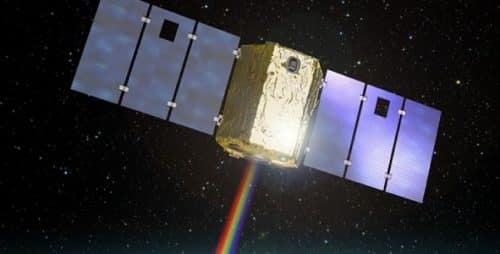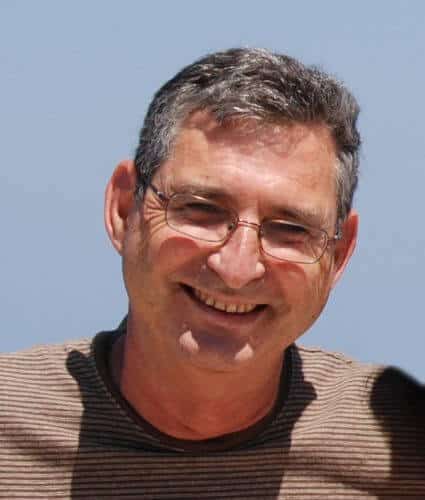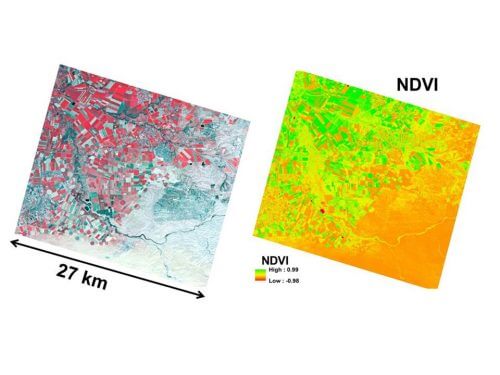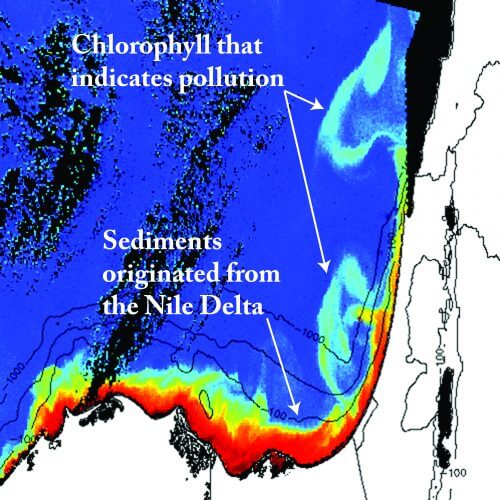The birth of the Venus satellite: after twenty years of "pregnancy" - a special interview with Prof. Arnon Karneali Mauni' BG, the chief scientist of the project

The birth of Venus, not the famous picture from the Uffizi Gallery by the artist Sandro Botticelli - but that of the Israeli-French satellite Venus, a project of the Israeli Space Agency in the Ministry of Science and the French Space Agency, was very long.
Prof. Arnon Karniali from Ben-Gurion University, who is the head of the scientific team of Halvin, says that the roots of the project go back to 1997 under the name "Project David" funded by a European scientific program. "A lot of water flowed in Jordan and a lot of people changed since then and the only ones left from the first birth are my father Blasberger (now the director of the Israel Space Agency at the Ministry of Science) and me. The David project was a camera concept that interested the Safed Space Agency until finally, in 2005, the agreement was signed between the heads of the French and Israeli space agencies to develop and launch the satellite.
"The feeling before the launch is one of elation after so many years of work reaching the end point and closing a circle."
As you know, the satellite was built and assembled for the most part in the aerospace industry and the camera - which is the heart of the satellite was developed in Alup with funding from the French government (because it was the responsibility of the French). It turns out that although it is an equal cooperation, in practice the Israeli share was very high.

Even since 12 years have passed why did it take so long?
The delay was partly due to technical problems in the coating of the filters and partly to administrative problems and mainly to find an efficient and relatively cheap launcher on which we would be 'second passengers'. It turns out that launching a satellite into space is a very large expense in the project of manufacturing a satellite system and to reduce the costs usually two or more satellites are launched on the same launcher. Part of the delay in the launch of Honus was because they wanted to pair it with another satellite. Here, too, it should be understood that the additional satellite should be more or less in the same orbit. It would not be appropriate if one satellite was in one orbit and another satellite in a second orbit and to correct the orbit for the second satellite takes a lot of fuel, energy, and time. Therefore, they waited for the satellite to have the same orbital characteristics. In this case the satellite was also built in Israel (Offset 3000), it doesn't matter, what's more, it is considered an Italian satellite because the Italian government purchased it in full.
Over the years there have been discussions about launching from Kazakhstan, once there was even a topic of launching from India whose route was not suitable for us but in the end we converged on Ariane.
Is the satellite technology still current after so many years?
The satellite allows a combination of three characteristics. The first 12 narrow wavelengths in the visible and near infrared. The second characteristic is the resolution - a very high ground resolution of 5.3 meters, the third: return to the same point on the earth's surface once every two days. The special thing is that we always arrive at the same vantage point on sites on Earth from the same angle of view. Unlike other satellites that can look at the same point from different directions, sometimes from east to west and sometimes from west to east. It is true that in each of these characteristics there are satellites whose performance is better: better spatial resolution, better return time and also more wavelengths, but even though the satellite was built for many years, the characteristics of its orbit are so special that there is no system in space that resembles it in this combination."

We have already performed several simulations of data with the unique spectral channels of the satellite, the channels were carefully selected to enable both monitoring of vegetation, also monitoring of soil, both monitoring of water and monitoring of the atmosphere. Each of the 12 channels has its own purpose. We built an algorithm that is built on several channels, but each of the channels has its purpose and we know what it is for from a scientific point of view."
The channels were selected in narrow atmospheric windows between the absorption channels of the gases of the atmosphere, one of which is a region known as the "red edge". It is usually difficult to use this spectral range for vegetation monitoring, but in the remote sensing laboratory, dedicated algorithms were developed to quantify vegetation characteristics such as chlorophyll, nitrogen, and the leaf area index with higher accuracy than traditional algorithms. In the red area we also have two overlapping channels that allow us to build a height model of both the ground and cloud height.
What will your role be now after the launch and how does the project affect Ben Gurion University as a whole?
"My laboratory will be the scientific center of the satellite. The laboratory will receive from the French Space Agency the images that Sonos will take over Israel. We will further process the images and combine them with more detailed atmospheric and topographic data than global models. We will build the national archive and distribute the images to researchers in Israel or anyone who wants to use this data. The data will be provided free of charge for research purposes and are prohibited for commercial use."
Ben Gurion University is proud to build the scientific center of the Venus satellite and promote research programs related to it. At the university, there is extensive activity in the field of monitoring the Earth's resources from various aspects, ecological studies, studies related to precision agriculture, monitoring of inland water bodies, as well as atmospheric studies. Israeli scientists in general and Ben Gurion in particular participate in a significant number of European programs within the framework of Horizon 2020, also working with NASA to promote projects.

If you mention NASA, it received an order from the new administration to stop investing in the study of the Earth and direct the budgets to the study of other bodies in the solar system. How does this affect research in the field?
NASA, which was in the XNUMXs and XNUMXs and even after that, a leader in observing the Earth from space, radiation has decreased and most of the space activity is moving to Europe. The European Space Agency has built a number of Earth-exploring satellite arrays of the Sentinel series. But what is more important is the future road map. The future plans of the European Space Agency for project continuity are much more mature than the American plans which are shrouded in fog. It is not clear if there will be much continuity for the American satellites - including the flagship satellites such as Moody's and Landsat compared to the long-term European programs that have a very long expiration time."
"It is a line that is quite consciously guided by the administration. As soon as the administration turns a blind eye and does not believe that climate change is caused by human activity, inevitably they will not like scientific research that claims the opposite, and contradicts its thesis. In a framed article, if Al Gore had been elected at the time, research using Earth observations would have taken a 180 degree turn. In Israel the atmosphere is better. We hear nothing against earth science. On the contrary, there is a lot of encouragement from the Ministry of Science and in particular from the Space Agency, which has received an encouraging injection of budgets in recent years, and of course from the Ministry of Environmental Protection.
As you know the launch is a very sensitive stage, are you afraid?
The encouraging thing is that the Vega launcher has a 100% success rate so far so we are optimistic on this point. 100% success is more than other launchers in the world, including the Israeli launchers.
See more on the subject on the science website:
- The Israeli satellites Venus and Offset 3000 will be launched next week from French Guinea
- The "Venus" environmental research satellite leaves Israel on its way to launch. Minister Aconis: "Looking forward to more opportunities for cooperation with France"
- The head of the French Space Agency at the ceremony of handing over the Venus satellite for launch: "Space missions are of great importance in the fight against global warming"
- Precision agriculture, from space
To watch the launch bA site dedicated to the Venus satellite
